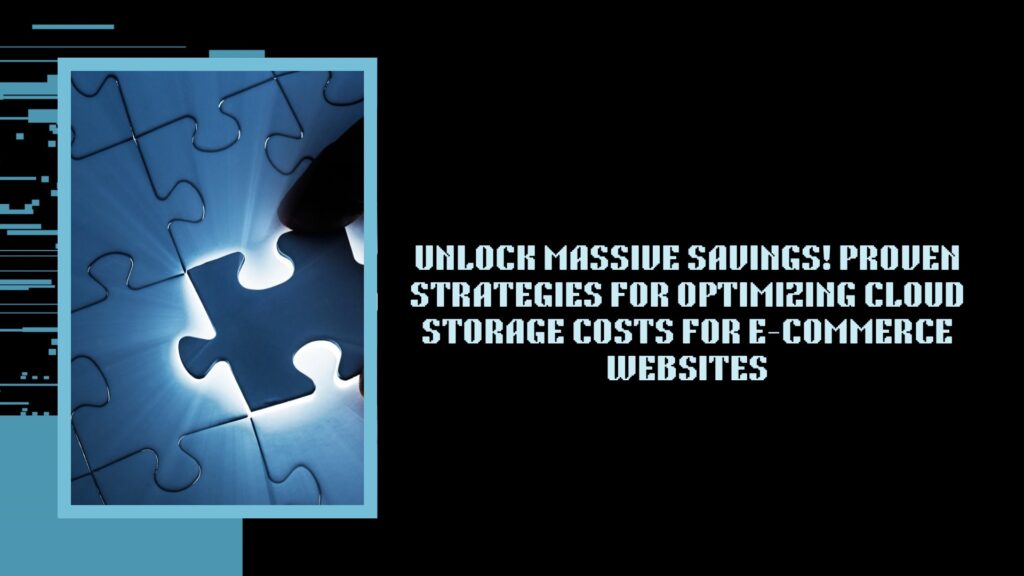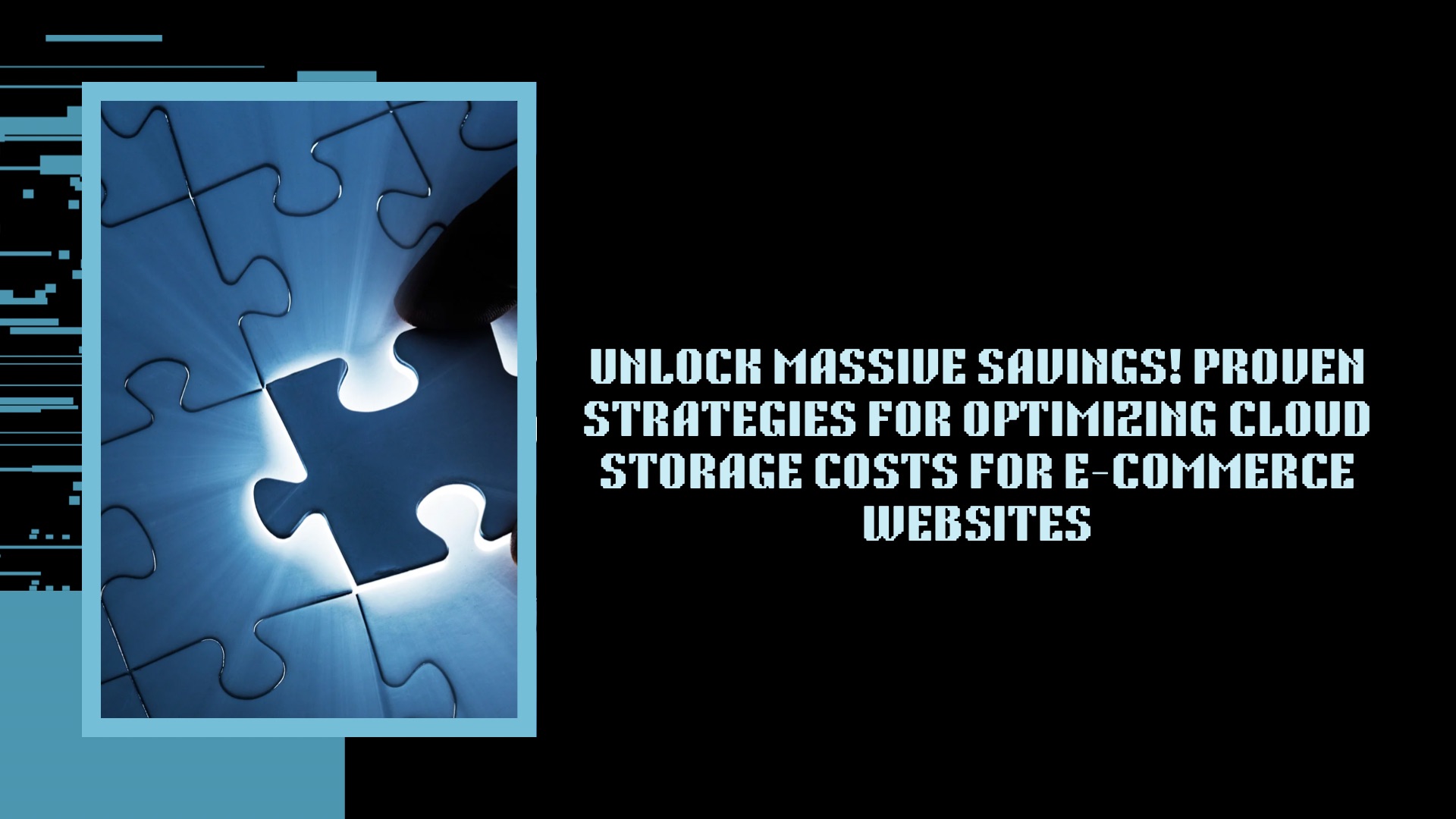Running an e-commerce website can get expensive, fast. One of the biggest culprits? Cloud storage costs. Optimizing cloud storage costs for e-commerce websites isn’t something most people think about until the bills start piling up.

Whether it’s product photos, customer data, or transaction records, all that information needs a place to live and storing it in the cloud can quickly burn through your budget if you’re not careful.
But don’t worry, there are ways to cut those costs without losing out on performance or flexibility. In fact, with the right strategies, you can keep your website running smoothly, handle more traffic, and even save money all at the same time. Sounds pretty good, right?
In this article, we’ll break down simple yet proven tips to help you save big on cloud storage for your e-commerce site.
From picking the right storage options to getting smart with how your data is stored and accessed, you’ll learn how to stretch your budget without sacrificing the quality your business needs to thrive.
So, if your cloud storage bills are starting to feel like a drain on your profits, it’s time to take action.
We’ve got the tips you need to make your cloud storage work harder and cost less. Ready to unlock those savings? Let’s dive into the best strategies to optimize your cloud storage costs!
Why Bother Optimizing Cloud Storage Costs for E-Commerce?
If you’re running an e-commerce site, you know how important cloud storage is. You’re storing all kinds of stuff – product images, customer information, sales data – everything that keeps your business running.
But without optimizing cloud storage costs for e-commerce websites, you could be throwing money away.
Here’s why optimizing is so important:
- Data keeps growing: Your business is scaling, and so is the amount of data you’re collecting. That means higher storage costs unless you manage it properly.
- Avoid wasting money: Most people don’t realize they’re paying for more cloud storage than they need. With a little fine-tuning, you can make sure you’re not overspending.
- Boost performance: Optimized storage helps your website run faster, which is great for customer experience and can even increase sales.
5 Simple Strategies to Optimize Cloud Storage Costs for E-Commerce Websites
Now that you know why it’s important, let’s look at five simple strategies you can use to optimize cloud storage costs for e-commerce websites. These are practical tips that can make a real difference.
1. Pick the Right Storage Tier
Not all data needs to be stored the same way. Cloud providers offer different storage options, called “tiers,” depending on how often you access your data.
- Hot storage: This is for data you need to access frequently, like product images and customer info.
- Cold storage: Great for stuff you don’t need often, like old sales records or seasonal data. It’s much cheaper than hot storage.
By moving data to the right tier, you can save a ton of money without losing access to what you need.
2. Clean Up Unused Data
Your cloud storage can fill up fast with stuff you don’t even use anymore—like old product photos or outdated records. Deleting or archiving unnecessary files can help you avoid paying for storage space you don’t need.
- Set a schedule to regularly go through your files and delete anything that’s no longer relevant.
- Set up automated data retention policies that help keep your storage lean and clean.
Cleaning up is one of the easiest ways to start optimizing cloud storage costs for e-commerce websites.
3. Compress Your Files
The bigger your files, the more storage space they take up. Luckily, you can shrink those files down without losing quality by compressing them.
- Use image compression tools for product photos.
- Compress documents and files before uploading them to the cloud.
By reducing file sizes, you’re cutting down on the storage space you use, which helps reduce costs.
4. Automate Storage Management
Automation can take a lot of the guesswork out of storage management. Many cloud providers have tools that automatically move data between tiers or delete files that haven’t been accessed in a while.
- Set up rules for automatically moving data to cheaper storage tiers.
- Use built-in tools to handle routine tasks, so you don’t have to worry about them.
By automating some of these processes, you can keep costs down without putting in a lot of effort.
5. Monitor Your Storage Usage
Most cloud storage services offer dashboards that show you exactly how much storage you’re using and where your costs are coming from. Use this information to keep track of your storage habits and spot areas where you can save.
- Set alerts for when you’re close to hitting your storage limits.
- Review your storage usage every month and make adjustments where needed.
Keeping an eye on your storage is key to optimizing cloud storage costs for e-commerce websites because it lets you catch any unnecessary expenses before they get out of hand.
What’s the Payoff for Optimizing Cloud Storage?
So, what do you actually get out of all this? The benefits of optimizing cloud storage costs for e-commerce websites go beyond just saving a few bucks here and there:
- Lower costs: Obviously, you’ll pay less for cloud storage each month, freeing up cash for other parts of your business.
- Better website performance: When you organize and optimize your data, your website loads faster, which makes for a better user experience—and happier customers.
- Flexibility to grow: When your cloud storage is optimized, it’s easier to scale up as your business grows, so you only pay for what you actually need.
Optimizing your cloud storage doesn’t just help you save money; it can also make your entire operation run more efficiently.
The Risks of Not Optimizing Cloud Storage Costs
If you ignore optimizing cloud storage costs for e-commerce websites, it could end up costing you more than just money. Here’s what you’re risking:
- Higher bills: Your cloud storage costs will keep climbing if you don’t manage them, which can seriously eat into your profits.
- Slower performance: Poorly managed data can slow down your website, leading to frustrated customers and lost sales.
- Wasted resources: You could end up paying for storage space you don’t even need—money that could be better spent elsewhere in your business.
Not optimizing your cloud storage could put you behind the competition and hurt your bottom line in the long run.
Ready to Save? Start Optimizing Cloud Storage Costs for Your E-Commerce Website Now!
Now that you’ve seen how easy it is to optimize cloud storage costs for e-commerce websites, it’s time to take action, form this to this.
From picking the right storage tier to automating tasks and cleaning up old data, these strategies can help you save big on your monthly storage bill.
Don’t wait until your cloud costs get out of control.
Start making these changes now and see the savings pile up. And if you need help getting started, reach out to your cloud provider for tools or consulting services—they’re there to help you make the most of your cloud storage.
Take control of your cloud storage today and unlock massive savings!










